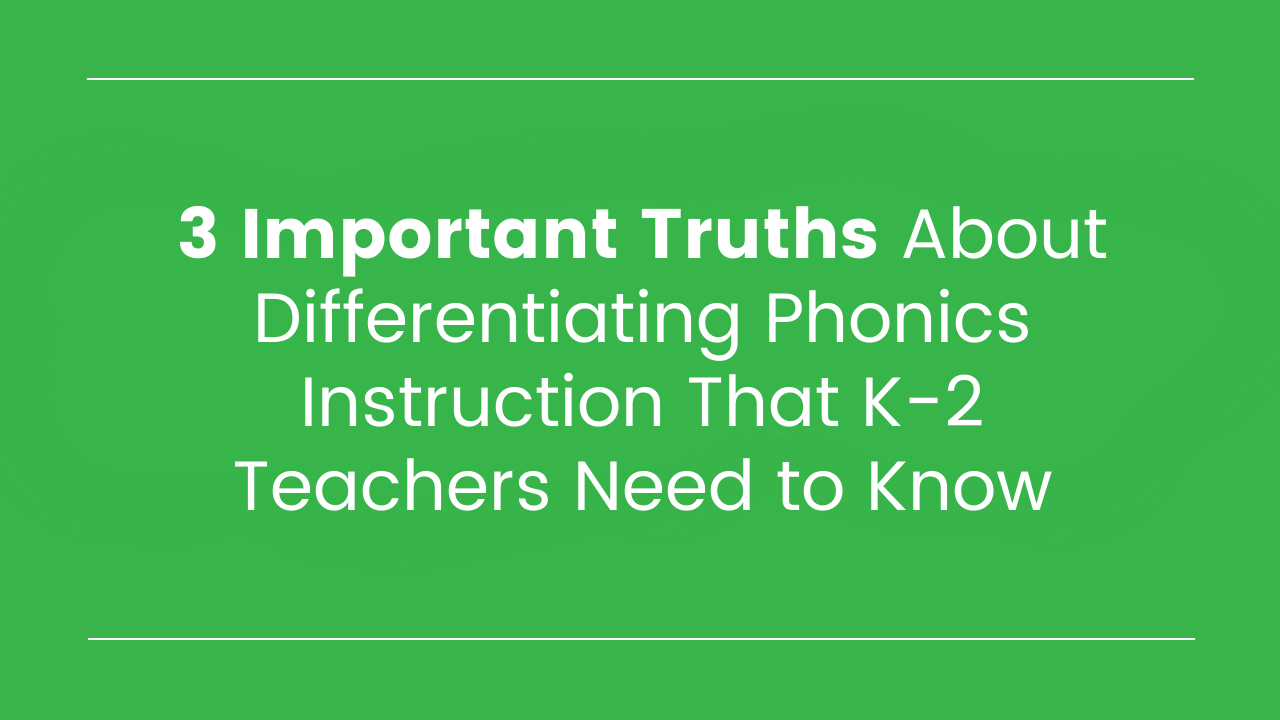
3 Important Truths About Differentiating Phonics Instruction That K-2 Teachers Need to Know
Differentiating your phonics instruction means having students work on skills and activities that are appropriate for their current abilities. This is a really good thing! Phonics knowledge is developmental and mostly sequential, which means that students aren't likely to successfully learn skills that are much more difficult than what they currently know. For example, they won't master long vowels before achieving some level of mastery with short vowels. When we differentiate our phonics instruction, we can have students work on the skills that they are ready for - and they'll be more likely to make progress.
However. There is a big "but" here! If you have a classroom full of students at many different levels, differentiation can feel overwhelming. You might feel defeated, or just unsure of how to pull off differentiation. So keep reading for 3 truths that will help you differentiate while also maintaining your sanity!
Truth #1: You can still differentiate even if you teach phonics in a whole-group setting. And it doesn't need to be difficult.
Teaching phonics in a whole group setting is sometimes necessary. If your time is limited and you have to choose between students getting phonics instruction every day (in a whole-group setting) or students getting phonics instruction 2-3 times a week (in a small group setting), we recommend that you choose the whole group instruction option. This gives students (especially in the K-2 grades) more practice time, which is essential to their phonics, reading, and spelling development.
When you teach phonics in a whole-group setting, here are a couple of tips to allow you to easily differentiate:
- Ask students questions at different difficulty levels. For example, if you're working on consonant blends and looking at the word "flag," you might ask, "What is the last sound in the word 'flag'?" You might also ask, "What is the vowel sound in this word?" or "Can you think of a 2-syllable word that contains the word "flag?" Notice how these questions target different levels of students in your classroom - and they only take a moment to prep!
- If you have students working at higher levels, have them tackle multisyllabic words with the same patterns you're teaching to the entire class. For example, if you're working on the vowel team "ea" with the class, some students might practice reading and building words like "heat." Other students might practice reading and building words like "meatloaf." All you need are 2 different word lists to make this happen!
Truth #2: Sometimes your instruction will be review for certain students, and that's okay.
Reviewing skills is actually very important in phonics instruction. Just because you've taught and practiced a skill for a week or two does not mean that students will remember the skill for the rest of their lives!
So when you need to teach or work on a skill that some students have already mastered, please don't beat yourself up about it! This "review" work can typically benefit these students, sometimes more than you even realize.
Truth #3: It's not necessary or practical to differentiate everything.
When you have a class of many students at different levels (and there's only one of you), it's not realistic to expect yourself to differentiate all of your phonics instruction. Take small steps like the ones described above, and these will benefit your students!
If you could use more resources to help you differentiate your phonics instruction, like:
- Decodable texts at different difficulty levels
- Word sorts with multi-level options
- List of words for advanced students
From Sounds to Spelling may be a good fit for you! Download a free trial of this multi-sensory, differentiated phonics program here.




